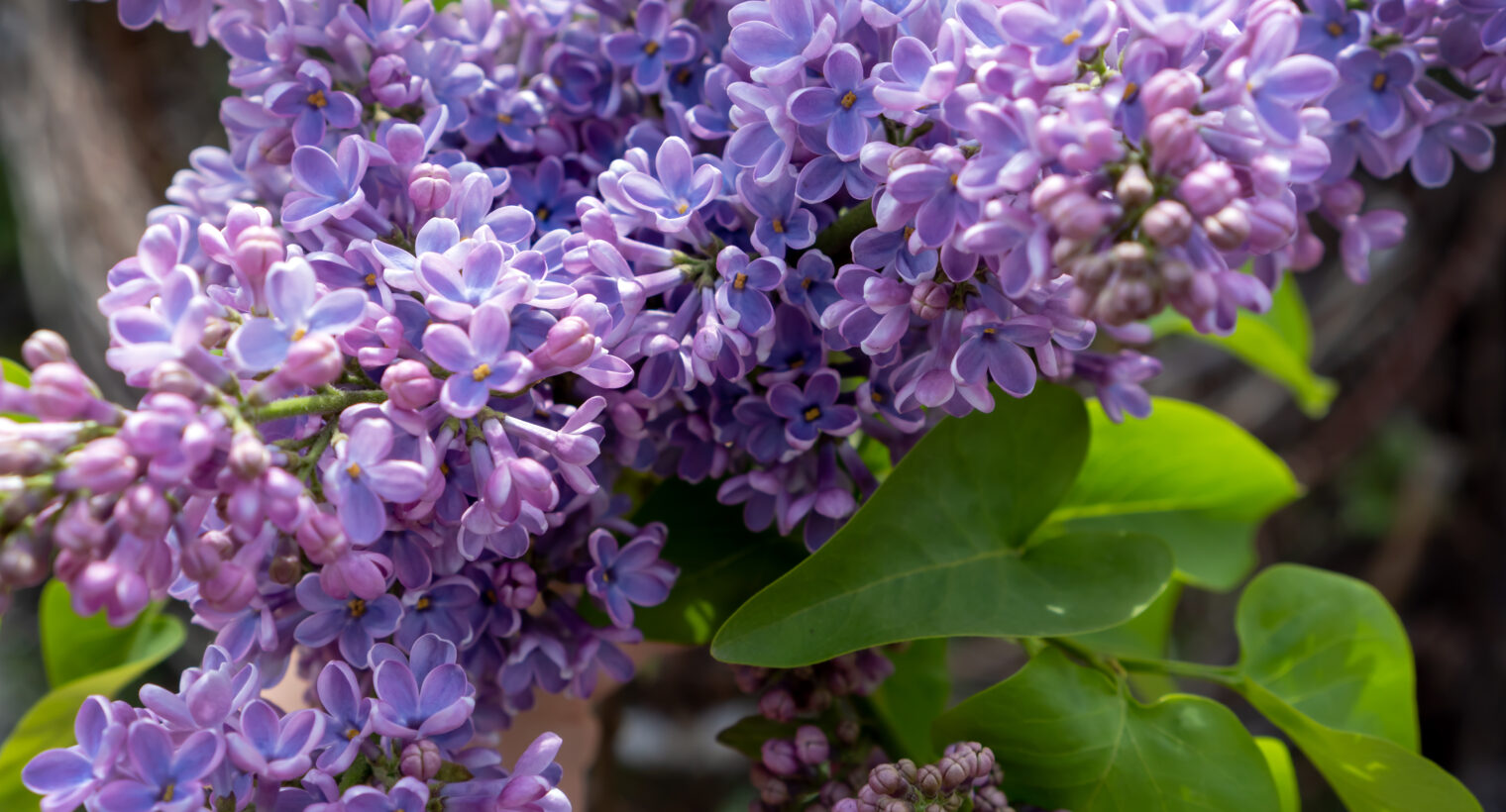By Sally Cunningham
_________________________________
No matter where you look, flowering trees and shrubs appear to be fuller and longer blooming than usual. Exceptions could be some magnolias and Japanese cherry trees whose blossoms were knocked down by heavy rain and wind. But consider these:
Lilacs have been glorious. Even ancient ones, not special cultivars, have huge white and purple flowers. When you purchase a lilac, don’t just fall in love with a flower color and the plant you see now. Instead, read the information about mature height so that you plant it where it can thrive for decades. A few cultivars (like the ‘Miss Kim’ lilac) remain short (say, five or six feet).
Making the most of lilacs (old and new)
- Recently planted lilacs can take four or five years to flower for the first time. Don’t be discouraged; there is nothing you did wrong as long as you see leaves on a live plant.
- The time to prune lilacs is now, if needed, after they bloom. Take out branches that are dead, damaged, rubbing against each other, or are just too long or tall. Cut off undesirable branches or shoots just above a bud node or another branch, or as close to the soil as you can. Do not flat-top the whole shrub. Never take out more than ¼ of the plant.
- If established lilacs are not flowering well, it may be because of
(a) a lack of sunlight—they prefer full or at least near-full sunshine.
(b) you pruned them last fall, when their buds were already setting, so you cut off the future flowers
(c) depleted soil, so add fertilizer now, just after flowering, using a balanced organic product or one that focuses on blossoms (with a higher middle number, as is 5-10-5 or a similar proportion.)
(d) all the growth is at the top, because somebody flat-topped the lilac, so lower branches and buds never get enough light. “Trimming” plants to make them shorter is not good pruning. - Very old lilacs can be brought back to better flowering at the height you can enjoy them, over a three-year period. Each year, look at the top of the plant and trace the tallest branches downward. Cut out 1/3 of the very tallest branches, cutting as close to the base of the plant as possible, or to a lower branch aiming outward. By year four you will have a flowery, medium-sized lilac.
- If a beloved lilac is now in a shady or over-crowded spot, you can take cuttings early in the season to plant in a better place. Or find shoots coming up near the mother plant. Sever the connection between them and the mother plant with a sharp blade, and transplant the new one in fall or next spring.
- (TIP: Get a pruning book or take a class; homeowners can master this part of yard care, but there are principles for doing it right.)
Forsythias
The yellow-flowered shrubs that bloom in April are called Forsythias. They are easy to grow, and form masses or clusters. However, they could begin to look messy or overgrown, and then flowering decreases. The answer as not to flat-top them (as explained above in Lilacs) but to selectively cut back tall or long shoots, always above a bud node pointing in the desired direction. You can do this aggressively at this time of year.
Viburnums
Most impressive this month, Double file viburnums (Viburnum plicatum tomentosum) are the ones you see with horizontal branches that have white blossoms on top, as if the plants have snow on them. The reason for the Latin proper name above is that there are many species and cultivars of Viburnums—a truly wonderful genus—so to get a “Double file” you need to know the name.
Horse chestnuts
These trees please the pollinators (bumblebees especially) just as they beautify the country roadsides. I have a giant one, near the road, (typical for the time) probably planted 120 years ago, now 80 feet tall. I also enjoy a newer, shorter cultivar (up to 30 feet), with red flowers.
Redbuds
The Eastern Redbud is a beautiful native tree (20 to 30 feet typically) that flowers pink before the leaves come out. I have enjoyed mine for weeks outside the living room window, and only in mid-May I’m seeing the flowers fading and the sweet leaves opening. Place a Redbud in a protected spot out of the harshest winter weather, perhaps in a courtyard or on the Eastern side of the house. Some of the newest cultivars are especially tender. Placement matters.
And so many more: Apples, pears, Spiraeas, Exochordas… It’s a great time to make notes on the plants you see flowering in gardens or nurseries. But remember: Spring flowers only appear for the season, and the shrub or tree should provide eco-system services (be good for birds, bees, native insects) and be aesthetically pleasing the rest of the year.
_________________________________
Sally Cunningham is a horticulturist and former Master Gardener, through Cornell Cooperative Extension, and a CNLP (certified nursery/landscape professional) through the wNY Nursery and Landscape Association. She is author of Great Garden Companions (Rodale Books) on organic gardening, Buffalo-Style Gardens (St. Lynn’s Press), and has provided decades of garden writing through The Buffalo News. Buffalo Spree Magazine, and many Rodale Books and Yankee Publications.
_________________________________


